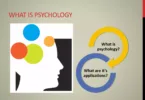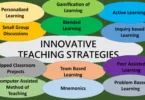Today, we’ll be talking about behavior management strategies in the classroom. As we all know, the classroom is not just a physical space; it’s a place where diverse individuals with unique traits and backgrounds come together to learn and grow. The classroom environment is not just a physical space. It’s a melting pot of diverse individuals with unique traits and backgrounds, bringing with them a multitude of behaviors. Educators must manage and guide these behaviors toward a conducive learning environment. Today, we explore behavior management strategies in the classroom, dissecting their significance, processes, and implementation.
Educators must manage and guide these behaviors to create a conducive learning environment. This is where behavior management strategies come in. By understanding the significance of these strategies, we can learn how to implement them effectively in our classrooms.
Some effective behavior management strategies include positive reinforcement, clear expectations, and consistent consequences. By praising good behavior, setting clear rules and expectations, and enforcing consequences consistently, we can encourage our students to behave in a way that promotes learning and growth.
Of course, implementing these strategies can be challenging, especially with different personalities and behaviors in the classroom. But don’t worry; we can create a safe and supportive learning environment for all with patience, practice, and a positive attitude.
So let’s work together to implement these behavior management strategies in our classrooms. We can create an environment where everyone thrives and succeeds with little effort.
Behavior Management: What is it, and why is it important?
Behavior management in an educational setting is a complex task that involves far more than simply prescribing rules and enforcing penalties. It is a comprehensive approach that aims to cultivate a positive learning environment, encourage student responsibility, and promote academic success. Effective behavior management is both an art and a science, requiring educators to master a suite of strategies and techniques and apply them judiciously to meet the unique needs of their students and their classroom environment.
Classroom behavior management refers to a broad array of techniques that educators use to ensure cooperative student behavior. Effective behavior management strategies can help create an environment conducive to learning, foster a positive classroom climate, and build students’ self-esteem.
Educators use This crucial aspect of teaching to encourage cooperative student behavior. By utilizing effective behavior management strategies, teachers can create a positive and safe learning environment for their students. A positive classroom climate can help students build their self-esteem and feel more confident in their abilities to learn and grow. So, let’s remember the importance of behavior management in creating a great classroom experience for teachers and students!
Understanding Behavior Management
At its core, behavior management in the classroom refers to the actions and techniques teachers employ to maintain a conducive learning environment. It encompasses practices designed to encourage positive behavior, discourages disruptive or inappropriate behavior, and help students develop self-discipline. These practices may be preventive, proactive, or reactive and involve individual and group strategies.
Behavior management strategies can include everything from clearly establishing expectations and routines to providing constructive feedback, employing positive reinforcement, developing behavioral contracts for individual students, and implementing school-wide approaches like Positive Behavior Interventions and Supports (PBIS). All these practices aim to create a classroom environment where students can effectively engage in learning.
Importance of Behavior Management
1. Enhanced Learning Environment
First and foremost, effective behavior management contributes to a learning environment conducive to academic achievement. When disruptive behavior is minimized and positive behavior is fostered, students are more likely to be focused, attentive, and engaged. A well-managed classroom provides a secure, predictable environment that supports and enhances learning.
Effective behavior management ensures a classroom environment conducive to learning. It minimizes disruptions, fosters respect, and facilitates a positive educational experience for all students.
2. Promotion of Self-Discipline and Personal Responsibility
Behavior management is not merely about enforcing rules and managing disruptive behavior. Rather, it is about teaching students how to manage their behavior independently. By guiding students to understand the consequences of their actions and encouraging them to make responsible decisions, teachers can help students develop self-discipline and personal responsibility – skills that will serve them well beyond the classroom.
Behavior management strategies don’t just control negative behavior; they aim to guide students toward self-discipline. This skill is vital for their personal and professional lives.
3. Teacher Satisfaction and Effectiveness
A well-managed classroom is not only beneficial for students but also for teachers. In such an environment, teachers are more likely to experience job satisfaction and less likely to suffer from stress and burnout. Moreover, when less time is spent on discipline issues, more time can be devoted to instruction and learning activities, thus enhancing teaching effectiveness.
4. Social and Emotional Development
Effective behavior management also contributes to students’ social and emotional development. Through strategies such as promoting respect for diversity, teaching conflict resolution skills, and fostering a sense of belonging, teachers can help students develop empathy, cooperation, and other key social-emotional competencies.
5. Academic Achievement
Ultimately, effective behavior management is tied to academic achievement. Research consistently shows a link between effective behavior management, student engagement, and improved educational outcomes. When students are engaged and focused, and disruptions are minimized, conditions are optimal for learning and achievement.
In conclusion, behavior management is essential to successful teaching and learning. Effective behavior management lays the groundwork for students to succeed academically, personally, and socially by promoting a conducive learning environment, fostering self-discipline, enhancing teacher satisfaction, supporting social-emotional development, and bolstering academic achievement.
As such, mastering effective behavior management strategies should be a priority for every educator.
Establishing a Positive Classroom Environment
The foundation of successful behavior management lies in creating a positive classroom environment. This section discusses some of the strategies that teachers can employ.
Strategies for a Positive Classroom Environment
- Set Clear Expectations: Establish a clear set of expectations for classroom behavior at the beginning of the academic year. Ensure they are easy to understand, achievable, and align with the school’s behavior policy.
- Consistent Consequences: Consistency is key in behavior management. Ensure that consequences for not meeting expectations are clear, fair, and consistently applied.
- Positive Reinforcement: Acknowledge and reward positive behavior. This encourages students to repeat the behavior and fosters a positive classroom environment.
- Involve Students in Rule Making: Engage students in the rule-making process. It fosters ownership and a greater commitment to adhere to these rules.
- Respectful Atmosphere: Create a respectful atmosphere where all students feel valued and understood. Show respect to students and teach them to respect each other.
Effective Communication as a Tool for Behavior Management
Effective communication plays a pivotal role in classroom behavior management. This section explores how communication strategies can enhance behavior management efforts.
Communication Strategies for Behavior Management
- Active Listening: Active listening involves fully focusing, understanding, responding, and remembering what is being said. It validates students’ feelings and builds trust.
- Non-Verbal Communication: Use non-verbal signals (like facial expressions or hand gestures) effectively to manage behavior without disrupting the class.
- Provide Constructive Feedback: Give students constructive feedback to help them understand their areas for improvement.
- Assertive Communication: Be strong in your communication. Clearly and respectfully communicate your expectations and requirements to the students.
- Two-Way Communication: Encourage students to express their feelings, thoughts, and ideas. Two-way communication strengthens relationships and fosters a sense of belonging.
Strategies for Individual Behavior Management
While fostering a positive classroom environment is essential, addressing individual student behaviors is equally important. This section discusses strategies for managing individual behaviors effectively.
Individual Behavior Management Strategies
- Behavior Contracts: Use behavior contracts for students who need additional support. It outlines expected behaviors and the consequences of not meeting these expectations.
- Individualized Instruction: Adapt your teaching methods to suit the learning styles of individual students. This can help engage students and decrease inappropriate behaviors.
- Use of Visuals: Visual aids can help students understand and remember expectations, schedules, and routines better, which can lead to improved behavior.
- Positive Attention: Give students positive attention when they engage in appropriate behavior. It reinforces the behavior and encourages the student to repeat it.
- Student-Teacher Conferences: Hold regular one-on-one meetings with students to discuss their behavior and strategies for improvement.
Implementing School-Wide Positive Behavior Interventions and Supports (PBIS)
School-wide Positive Behavior Interventions and Supports (PBIS) is a proactive approach to establishing the behavioral supports and social culture needed for all students in a school to achieve social, emotional, and academic success.
Components of PBIS
- Preventive Strategies: PBIS focuses on preventative strategies, setting clear expectations for behavior, and teaching these to all students.
- Positive Reinforcement: Positive behaviors are acknowledged and reinforced, creating a positive school environment.
- Data-Driven Decision Making: PBIS uses data to make decisions, monitor progress, and adjust strategies as needed.
- Collaboration: It encourages collaboration among staff, parents, and students for the program’s success.
- Continuous Monitoring: Regular assessment of the program’s effectiveness and adjustments based on data
Empowering Students: Building Self-Regulation Skills
Self-regulation skills are crucial for students to manage their behaviors effectively. Educators can help develop these skills through targeted strategies and interventions.
Strategies for Building Self-Regulation Skills
- Modeling Self-Regulation: Teachers should model self-regulation skills. Demonstrating control over emotions and behaviors sets a positive example for students.
- Teaching Coping Skills: Teach students coping strategies for managing emotions and stress. Techniques like deep breathing or mindfulness can be useful.
- Providing Structure and Routines: A structured environment with clear routines helps students understand what’s expected of them and enables self-regulation.
- Offer Choices: Allowing students to make choices in their learning promotes a sense of control, encourages responsibility, and facilitates self-regulation.
- Promoting Self-Reflection: Encourage students to self-reflect on their behaviors, identify improvement areas, and develop action plans.
Frequently Asked Questions
What is behavior management in the classroom?
Classroom behavior management refers to various techniques teachers use to promote positive behaviors, discourage negative behaviors, and create a conducive learning environment.
Why is behavior management important in education?
Effective behavior management is crucial as it fosters a positive classroom climate, encourages active learning, promotes self-discipline among students, reduces teacher stress, and contributes to social and emotional development. Ultimately, it also aids in improved academic achievement.
How can a teacher establish a positive classroom environment?
A positive classroom environment can be established by setting clear behavioral expectations, consistently applying consequences, reinforcing positive behavior, involving students in rule-making, and fostering a respectful atmosphere.
What role does communication play in behavior management?
Communication plays a crucial role in behavior management. Active listening, non-verbal communication, constructive feedback, assertive communication, and encouraging two-way communication can help manage student behavior effectively.
What are some strategies for individual behavior management?
Strategies for individual behavior management include using behavior contracts, providing individualized instruction, using visual aids to reinforce expectations, giving positive attention to appropriate behavior, and holding student-teacher conferences to discuss behavior and strategies for improvement.
What is the School-Wide Positive Behavior Interventions and Supports (PBIS) approach?
PBIS is a proactive approach to establishing the behavioral support and social culture needed for all students in a school to achieve social, emotional, and academic success. It focuses on preventive strategies, positive reinforcement, data-driven decision-making, collaboration, and continuous monitoring.
How can teachers help students build self-regulation skills?
Teachers can help build self-regulation skills by modeling self-regulation, teaching coping skills, providing a structured environment with clear routines, offering choices to students, and promoting self-reflection on behavior.
What are behavior contracts, and how do they help manage individual behavior?
Behavior contracts are agreements between students and teachers that outline expected behaviors and the consequences for not meeting these expectations. They provide clear guidelines for the student’s behavior and can be effective for students who need additional behavioral support.
What are some effective non-verbal communication techniques for behavior management?
Effective non-verbal communication techniques for behavior management can include using facial expressions, hand gestures, or other visual signals to manage behavior. These can convey expectations or commands without disrupting the flow of a lesson.
What is the role of positive reinforcement in behavior management?
Positive reinforcement involves acknowledging and rewarding positive behavior. It can encourage students to repeat the behavior, help establish a positive classroom environment, and promote a sense of self-worth and competence.







